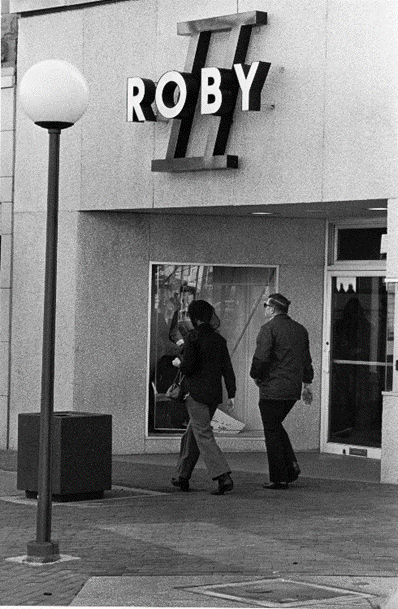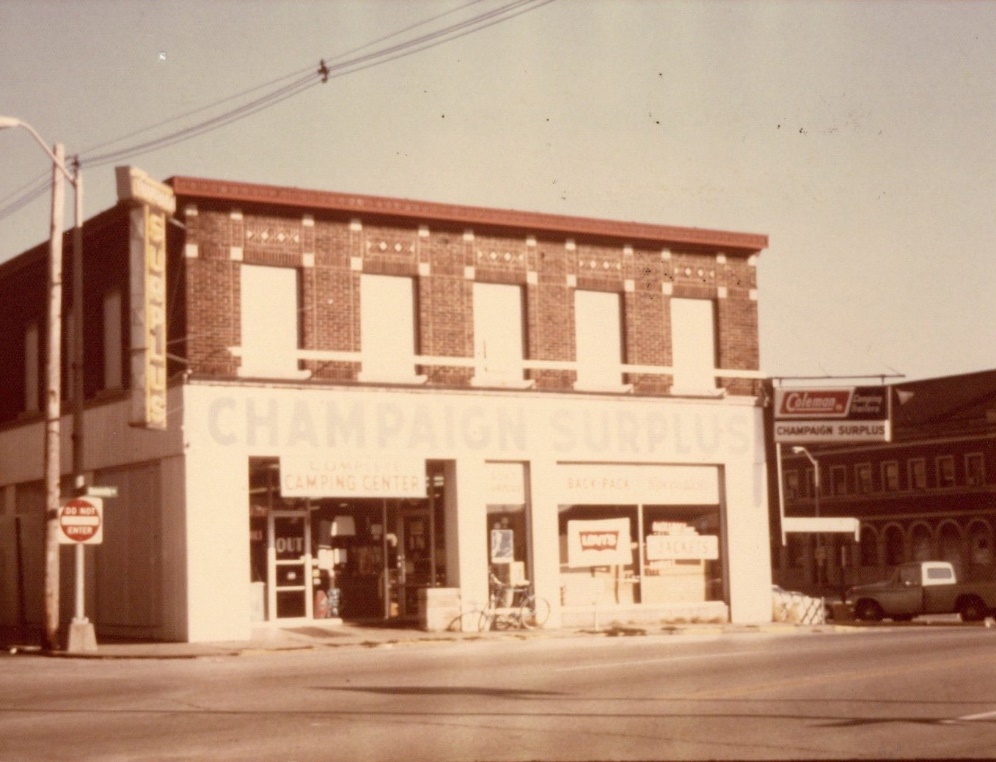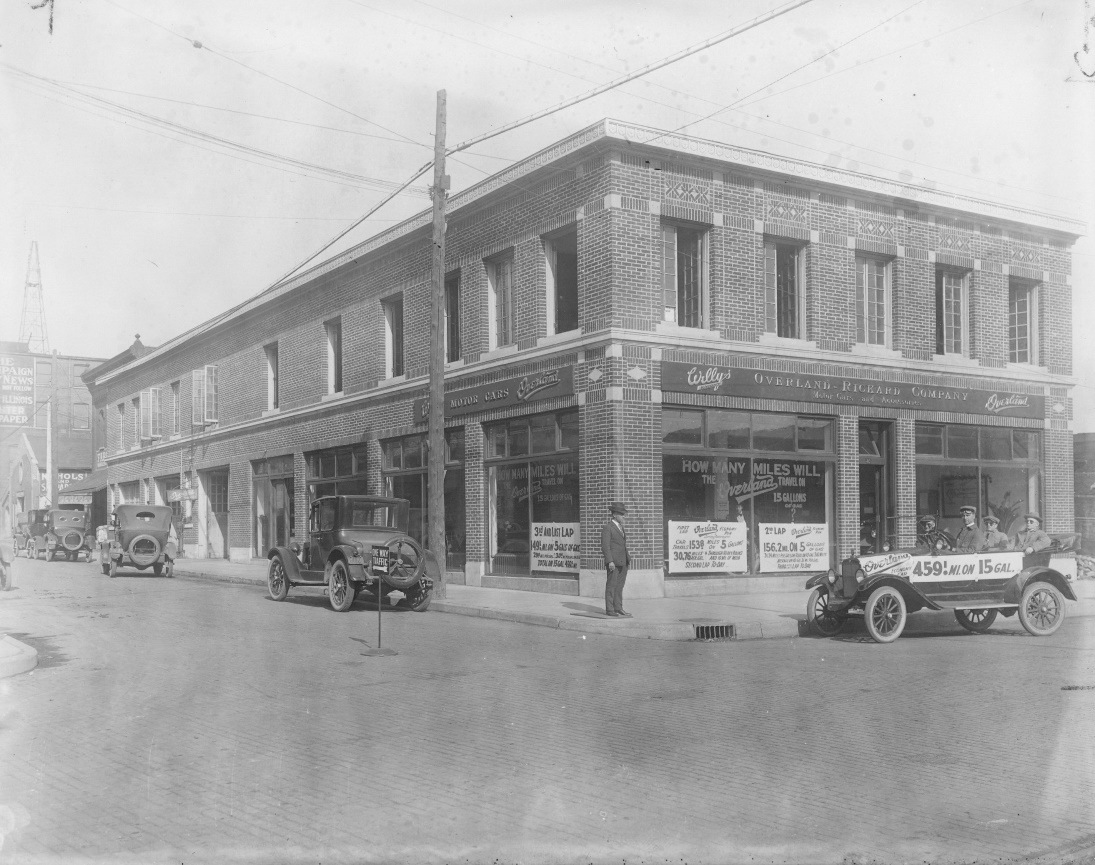Downtown Champaign is brimming with historic buildings that often have me wondering, “who else has walked through this doorway, and what else has this building been before?” So, I took a look into four popular downtown Champaign establishments and the historic buildings they are housed within, and I researched what they were 50 years ago and 100 years ago.
Watson’s Shack & Rail – 211 N. Neil St., Champaign
Watson’s Shack & Rail is a local favorite for chicken, comfort food, and fun slushies. The building in which it operates has stood in downtown Champaign for over a century. Mostly used for gathering socially over the decades, did you know that the building was also home to a successful local department store?
50 years ago, in 1975, the building housed Roby II, an expansion of the famous Robeson’s Department Store of downtown Champaign. Still accessible from the main store’s south parking plaza, Roby II offered local women some of the finest fashion at the time. It carried designer names such as Liz Claiborne in addition to more affordable names like Anne Klein II and Adrienne Vittadini.

In 1925, one could visit Leseure Bros. for cigars and a game of billiards at the same location. In addition to the location on Neil St., there was also a location on Green St. that was popular with the university students on campus. In the photos below, you can see Leseure’s Cigars and Billiards just to the right of the trolley.


The Literary – 122 N. Neil St., Champaign
A beloved third space in downtown Champaign, The Literary sees many book and brunch lovers walking through its doors. However, before the building’s walls were stacked with books, it housed sewing machines and racks of clothing.
In 1975, the lower floor of building was known as Blum’s, a store that specialized in junior and teen women’s fashion. It also had a Campustown location and another in Carbondale, IL. Blum’s closed its downtown location in 1981 after business traffic slowed when the pedestrian mall was built, isolating the store from vehicle traffic and making parking a headache. Owner Edward Blum also contributed the close to the popularity of the newer Market Place Mall.

100 years ago, in 1925, the building housed Singer Sewing Co. Singer Sewing Co. was a manufacturer of the popular Singer sewing machines. Singer’s original design was the first practical, consumer sewing machine. The Singer Sewing Co. of Champaign advertised themselves as the “originators of these machines,” and boasted that they only employed expert operators.

Pour Bros – 40 E. University Ave., Champaign
Currently a local taproom, the large, historic building on University has been utilized for its space in many different ways over the years. Where you can now socialize over a craft beer with friends, you could have once browsed for cars and surplus items.
In 1975, the building was Champaign Surplus Store. Covering the original windows with a different façade, the Champaign Surplus Store advertised itself as a “treasure of quality brand-name products," listing brand names such as Levi’s, Coleman, Fruit of the Loom, Spaulding, Converse, and more.

100 years ago, in 1925, the building was home to Overland-Rickard Co. Overland Rickard Co. was a car dealership and showroom that opened just 6 years prior in 1919. The building had an elevator that could lift cars to the second floor, and although the elevator has since been removed, the original concrete floors are still there.

Mad Goat Coffee – 57 E. Main St, Champaign
The new, independent coffee shop down the street from the train station has also been many interesting spots for the downtown area. Most of us may remember in recent history that is was a local bar, but it has also housed cafes and a pawn shop.
In 1975, the building was Trader’s World. Trader’s World was a unique pawn shop where you could purchase a pocket knife, guitar, or much of anything you would like. It was next door to the locally famous Vriner’s Confectionary.

In 1925, the building was home to Blue Fountain Café. When it opened, Blue Fountain Café was penned as “one of the classiest new cafes in the Twin Cities,” and got its name from a fountain that was installed in the center of the room that was decorated with blue electric lights. The Urbana Daily Courier described the café having “12 booths built in attractive red gum on one side of the room, seven tables lining the center, and a serving counter extending the full length of the room.”

-Maggie Weimer
Archives Assistant
